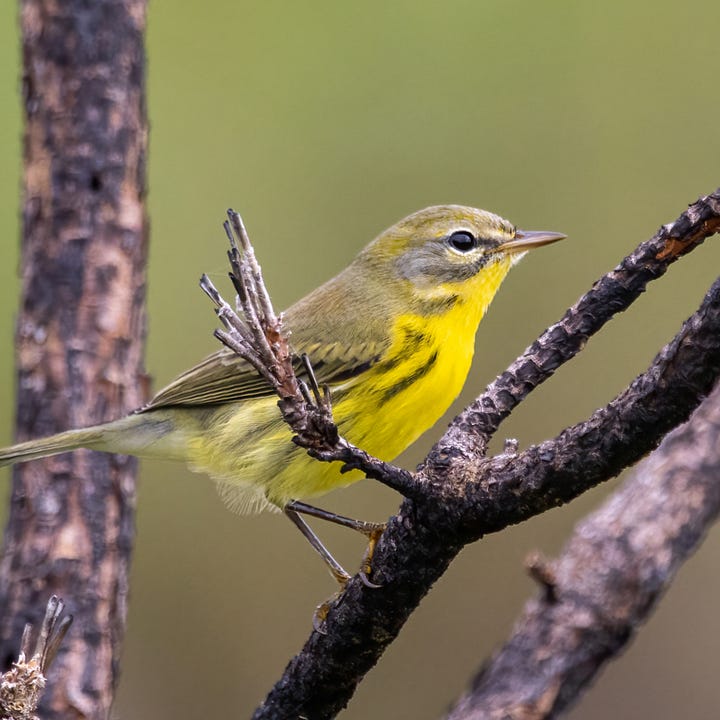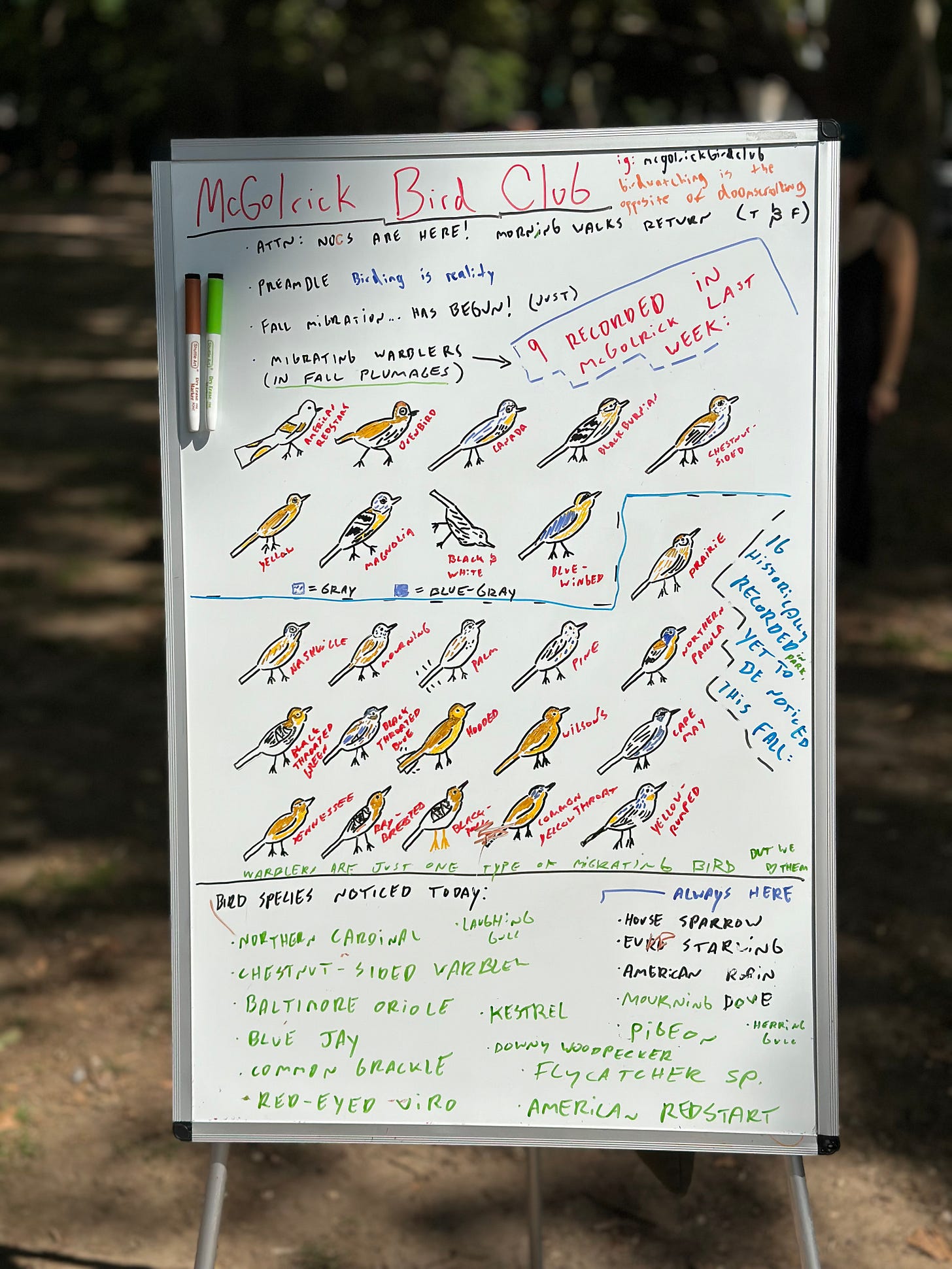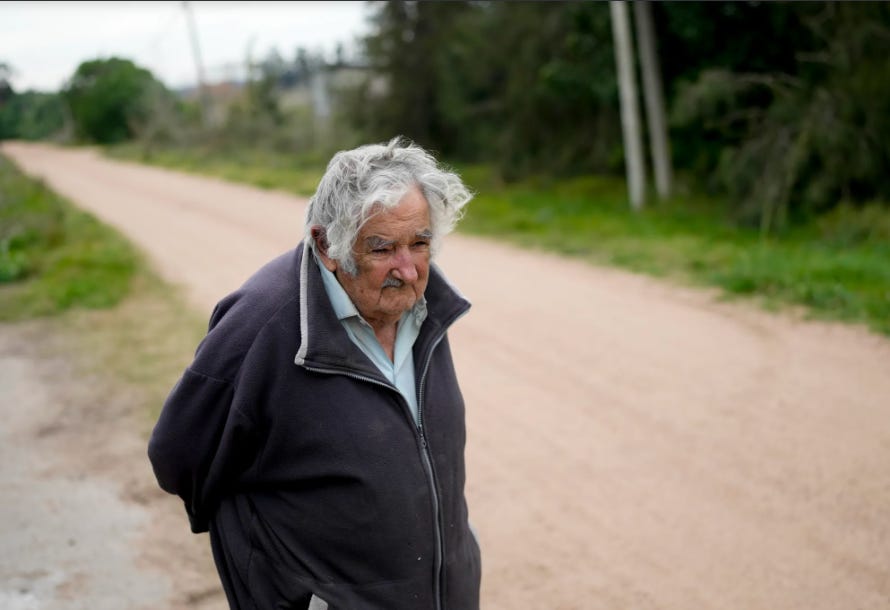MICRO-SEASON — AUG 19 - AUG 25
Whispers of autumn, first seen birds, pre-work walks, Pepe the Uruguayan, and more
Ahoy-hoy, bird noticing baddies,
Full Sturgeon Moons. Early autumnal winds. Or perhaps just way too noisy a news week. Whatever the cause, you, like us, may feel an urge to flee.
We’re in good company. Because each fall, organisms of every class and creed—from the brattiest Bogong Moth to the zaniest zooplankton to the tȟatȟáŋka-est Turner herder—dust off their doldrums and MIGRATE.
To where, oh where?, does your magnetic field point?
Love & Guts & Ultraviolet Light,
Bird Club Studio
UPDATES & ANNOUNCEMENTS
Bird with us before work! Fall Migration, the ancient and mysterious phenomenon during which millions of birds go longitudinal en route to warmer breeding grounds as far away as South America, has 👏 f*ck 👏 ing 👏 be 👏 gun 👏 peo 👏 ple. For the run of September, in addition to our usual Saturday seshies, we’ll bird McGolrick Park Tuesday and Friday mornings, 6:30 ‘til 7:45am or so. Birds are most active early. Just show up!
Your new binoculars are here! If you were lucky enough to get in on our latest Nocs Provisions group discount, pick your goodies up at a Saturday walk! Or else DM us to arrange a handoff.
MICRO-SEASON AUG 19—AUG 25
“Go and measure to what length the silvery willows catkins have crept out beyond their scales, if you would know what time o' the year it is by Nature's clock.” ― Henry David Thoreau

Current Japanese micro-season: Thick fog descends. As for McGolrick Park, perhaps New York City and even larger swathes of the eastern US, we notice—
A sense of Autumn · Heavily plumaged trees thin · First big migration push · First migrating thrush · First Blue-winged Warbler · Lingering monarchs
Blackburnian, Canada, Chestnut-sided, Blue-winged and Magnolia Warblers, plus Red-eyed Vireos, Scarlet Tanagers, Baltimore Orioles, Blue-gray Gnatcatchers, Flycatchers and more—all of ‘em were findable in McGolrick Park this week. Wondering why you didn’t notice? Early-worm with us this September!
First migrating thrush? Veery. Review our thrush lesson here
Lingering monarchs may be explained by cold fronts, which delay breeding & movement. Latent lepidopterist? Check out this buttery blog
AUG 24, 2024 — SATURDAY
Conditions: Hot n’ Not • Attendance: ~70 • Vibrations: Quiet Riot
Saturday birds: Chestnut-sided Warbler · American Redstart · Red-eyed Vireo · Baltimore Oriole · Flycatcher sp. · Blue Jay · Northern Cardinal · Common Grackle · Laughing Gull (flyover) … And our 5 urban park besties: Rock Pigeon · European Starling · American Robin · House Sparrow · Mourning Dove
SHORTY-LESSON: FALL WARBLERS
We’ve been chipping away at fall warblers for weeks now. Before embarking on this last lesson, which (GASP), gets us to the 25 26 warblers recorded in McGolrick Park, we want to acknowledge the barely perceptible, flitting bird in the room:
This is hard.
Warblers are hard. They’re small and they’re fast and their relatively drab fall feathers make them difficult to tell apart, even with great views.
DO NOT WORRY. These image based reviews, later completed by IRL experiences, will be enough. TRUST. In the meantime: TRY. FAIL. TRY AGAIN. BE HUMBLE. And remember, always:
YOU WERE MADE TO DO THIS. Let’s-a-go!


Tennessee Warbler—Spring’s moss-winged, white-browed males go yellows-grays overall, but retain that signature, lengthy brow.


Prairie Warbler—It’s the face that fades for fall. You’re still looking for a) a distinctly thick, well-defined, under-eye baggie; plus two very sharp, parallel side stripes over yellow. (Advanced: Compare with fall Magnolia. How are they different?)


Cape May Warbler—”The tiger warbler!” We’re still looking for a distinctive stripe-heavy front + sides. Check too for hints of those super sweet spring face masks + mops.


Mourning Warbler—The Mourning Warbler’s executioners hood looks a little less drippy in fall. All gray head over a yellow-ish bod on our classically shy, skulking warbler.


Wilson’s Warbler—Willies fall lewks are easy to confuse with similarly gray-yellow Yellows & Hoodeds. (So much so that if we’d been thinkin’ we woulda juxtaposed them in a single lesson. Next time!) ANYWAY! Wilson’s typically have more olive on their foreheads and caps—which sets off broad yellow eye-rings.


Blue-winged Warbler—This bird was first seen in McGolrick (on, like, Tuesday) by none other than Parsley Steinweiss a.k.a P-Slay! The only bright yellow warbler with cat-eye makeup + blue-gray wings who, mercifully, doesn’t change much spring ←→ fall.
We’ll present all 26 warblers next week! Reply to this email with warbler questions et al!
POSTSCRIPT
“When I’m in the field working with the tractor, sometimes I stop to see how a little bird constructs its nest. He was born with the program. He’s already an architect. Nobody taught him. Do you know the hornero bird? They are perfect bricklayers. “I admire nature. I almost have a sort of pantheism. You have to have the eyes to see it.” ― José (Pepe) Mujica via The New York Times






